The effect of omega-3 fatty acids on our health
What are omega-3 fatty acids?
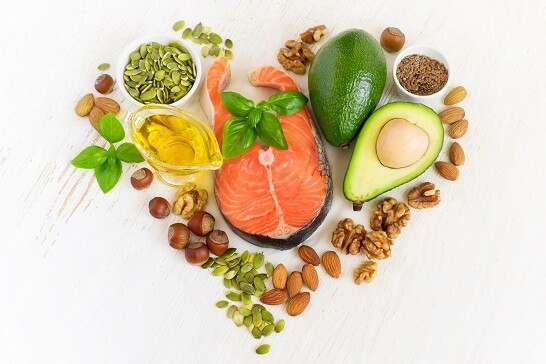
Omega-3 fatty acids are part of the polyunsaturated fatty acids. Unlike saturated fatty acids, the body cannot produce them by itself. They must therefore be provided by the diet. Since omega-3 fatty acids are vital for our body, they are called essential fatty acids.
There are several types of omega-3 fatty acids. They differ mainly in their chemical structure and natural origin.
The most important omega-3 fatty acids are:
- Eicosapentaenoic acid (EPA)
- Docosahexaenoic acid (DHA)
- Alpha-linolenic acid (ALA)
Plant-based omega-3 fatty acids

Main source for vegetable omega-3 fatty acid ALA (alpha-linolenic acid) are linseeds and nuts. Vegetable oil from linseed oil is particularly rich in ALA.
Marin omega-3 fatty acids

The marine omega-3 fatty acids EPA (eicosapentaenoic acid) and DHA (docosahexaenoic acid) are mainly found in marine products such as cold water fatty fish, krill and algae.
Not all omega-3s are the same!
Numerous studies confirm the health benefits of the marine omega-3 fatty acids EPA and DHA. Even if linseed oil is assumed positive for our health, substantial scientific evidence for the vegetable omega-3 fatty acid ALA is pending.
The body can convert ALA fatty acid to EPA and DHA omega-3 fatty acids, but the conversion rate varies greatly from person to person and depends on a variety of factors (such as age, gender, weight and metabolism). The average conversion rate is only 5-10%.
Vegetable omega-3 fatty acids from linseed oil and other plant-based sources are a good complement to marine omega-3 fatty acids from fish and algea, but unfortunately they do not replace them!
The health effect of the omega-3 fatty acids EPA and DHA
The European Food Safety Authority (EFSA) confirms favourable health benefits from the marine omega-3 fatty acids EPA and DHA:

Heart function
The heart is the central organ of the human body. Blood flow and cell metabolism are key factors in heart health. An adequate intake of omega-3 fatty acids has been shown to positively influence these factors.
EPA and DHA contribute to normal heart function. According to EFSA, the beneficial effects are felt with a daily intake of at least 250 mg of EPA and DHA.

Eye and vision
DHA helps maintain normal vision. According to EFSA, the beneficial effects are felt with a daily intake of at least 250 mg of DHA.

Brain and cognitive function
The brain is composed largely of unsaturated fatty acids. Recent studies show a positive correlation between the intake of omega-3 fatty acids and improved brain function.
DHA helps maintain normal brain function. According to EFSA, the beneficial effects are felt with a daily intake of at least 250 mg of DHA.

Pregnancy

Infants
The omega-6 / omega-3 ratio
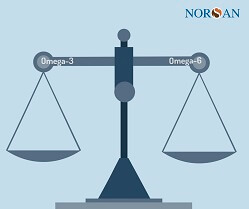
Our body needs both omega-3 and omega-6 fatty acids. Although the two fatty acids have a similar chemical structure, their are responsible for opposite mechanism in the body. While omega-3 fatty acids reduce inflammatory processes, omega-6 fatty acids promote the development of inflammation. Our body therefore needs a balance between omega-3 and omega-6 fatty acids.
An imbalance between omega-3 and omega-6 can cause silent inflammation in the body that can promote certain diseases. The omega-6 / omega-3 ratio is a silent inflammation factor in the body. A ratio of less than 3:1 (omega-6 to omega-3) is considered inflammatory neutral.
Omega-3 deficiency
With our modern nutrition habits, omega-3s and omega-6s are out of balance.
Since the Stone Age, our diet has ensured a balance between the two fatty acids. Changes in our eating habits since the 1960s (consumption of processed foods and industrially prepared dishes, mass consumption of farm animals, increased use of cheap vegetable oils, etc.) have had a negative impact on the omega-6 / omega-3 ratio.
Today, the omega-6 to omega-3 ratio of the average population is about 15:1. This means that we ingest 15 times more omega-6 than omega-3! Young people under the age of 25 even have an average ratio of 25:1, which is not surprising if you look more closely. In fact, fish is rarely on the menu among young people, while fast food, ready meals and sweet and savoury snacks are on the rise.
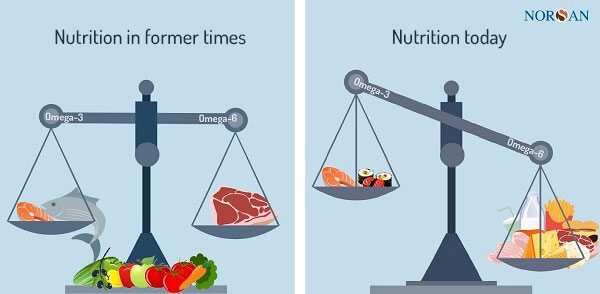
What are the consequences of an excess of omega-6 fatty acids?
Omega-6 rich food
Foods that are particularly rich in omega-6 fatty acids are mass-produced meats, fast food and ready-made meals. Processed dairy products (such as cheese and butter) and chicken eggs are also high in omega-6 fatty acids.
The high content of omega-6 in foods of animal origin is mainly due to the increased use of concentrated and cheap feeds in mass farming. Due to the high omega-6 content (more than 50%) of the soybean oil contained in soybean meal, we ingest a high dose of omega-6 via our daily diet. Because the omega-6s that farm animals ingest through their feed also end up on our plates later on.
In addition, sunflower oil, soybean oil and margarine used in many industrially produced foods are also high in omega-6. These vegetable oils are also used in cooking in many homes.
Omega-3 rich food
The best sources of omega-3 are fatty fish such as herring, mackerel, salmon, sardines or anchovies, and seaweed. Fish are rich in omega-3, but similar to us, their nutrition is important. For example, wild-caught fish contain a large amount of omega-3 because they feed mainly on algae, shrimp and small crabs. Farmed fish, on the other hand, are generally much lower in omega-3 because their diet consists mainly of industrial feeds, often based on soybeans.
Linseed oil, chia oil and walnut oil also contain a particularly high proportion of omega-3 fatty acids. However, this is the plant fatty acid ALA, which the body has difficulty converting into EPA and DHA.

Meat products
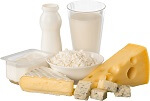
Dairy products

Sunflower oil

Fish
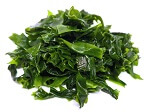
Algae
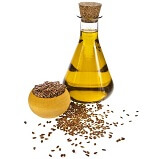
Flax seed oil
Daily Omega-3 requirements
What is the right dose?
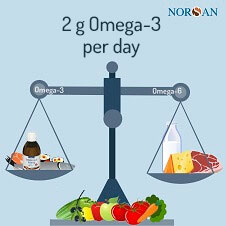
In order to compensate for an omega-3 deficiency and to rebalance its omega-6 / omega-3 ratio, it is recommended to consume 2,000 mg of omega-3 fatty acids per day. This has been demonstrated, on the one hand by numerous scientific studies, and on the other hand by the results of more than 10,000 individual analyses carried out in collaboration with Omegametrix®, the largest European laboratory specialising in the measurement of fatty acids.
Daily requirements for omega-3 can be met both through diet and by taking a natural dietary supplement. To obtain 2,000 mg of omega-3 per day, however, you would need to consume between 100 and 3,000 grams of oily fish per day, depending on the type of fish. Such a high consumption of fish is impossible for most people and is no longer recommended due to increasing pollution of the seas and oceans.
Regular consumption of quality omega-3 food supplements based on fish oil or seaweed oil, carefully purified and free of harmful substances, is therefore an excellent alternative. With NORSAN Omega-3 oils, for example, one spoonful per day is sufficient to cover the Omega-3 requirement of 2,000 mg.
And for a better efficiency, it is advisable at the same time to reduce the consumption of foods rich in omega-6.

NORSAN Products
Rich in EPA & DHA
-
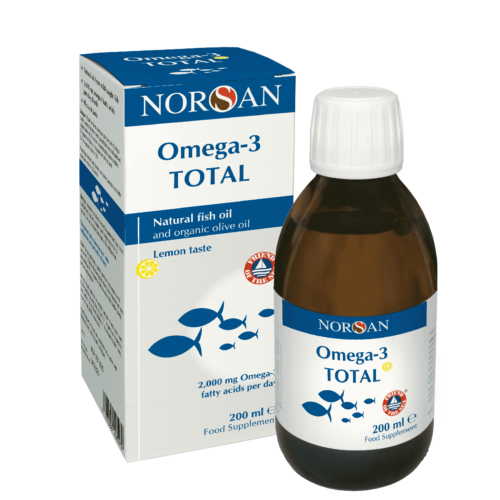
Omega-3 Total Oil
€27,00 (13,50 €/100 ml) Beneficial for heart, vision and brain- Natural wild-caught fish oil from sustainable fisheries
- 2,000 mg of omega-3 per daily dose (1 tablespoon)
- High EPA content
- 100% natural – not concentrated
- Cold-pressed organic olive oil as antioxidant
- Vitamine D3 (800 IU)
- Pleasant taste: lemon or plain flavour
- Cleared of pollutants, PCBs and heavy metals
-
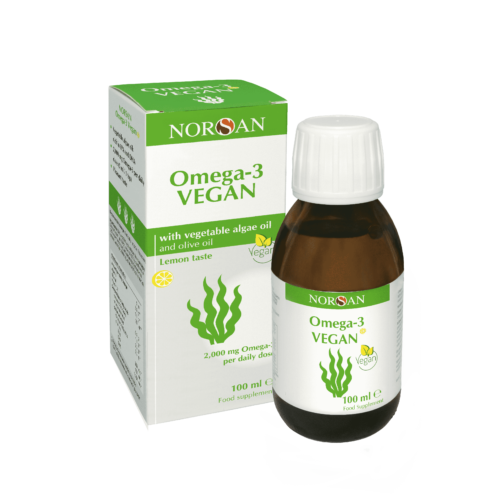
Omega-3 Vegan Oil
€29,00 (29,00 €/100 ml) 100 % vegan and without fish!-
- Vegatable algae oil: rich in EPA and DHA
- 2,000 mg of omega-3 per daily dose (1 teaspoon)
- Non-polluting and environment-friendly culture
- 800 IU vitamin D3 (vegan)
- Virgine organic olive oil as an antioxidant
- Pleasant lemon flavour(vegan)
-
